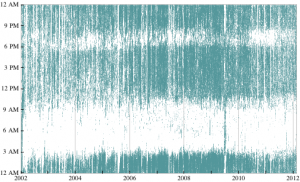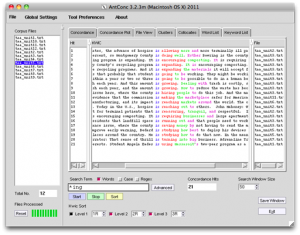A nice story from the New York Times by Michael Winerip, Robo-Readers Used to Grade Test Essays (April 22, 2012) talks automated essay scoring software (AES). The story first reports a study from the University of Akron that showed that AES software is comparable to human graders (see A Win for the Robo-Readers by Steve Kolowich from Inside Higher Ed.) The NYT story goes then to report how Les Perelman, a director of writing at MIT, has shown how you can game AES tools. Among other things they don’t check facts or truth so you can write all sorts of outrageous things and still get a good score from AES. The story discusses some of the patterns that get good scores like lexical variety and long sentences. The story ends with the possibility that AES could be matched by essay writing software,
Two former students who are computer science majors told him (Perelman) that they could design an Android app to generate essays that would receive 6’s from e-Rater. He says the nice thing about that is that smartphones would be able to submit essays directly to computer graders, and humans wouldn’t have to get involved.
Particularly interesting is an essay Perelman wrote to show how poor essays can game the system. I wish I could say that I never saw writing like this and that therefore there was no danger of AES systems rewarding the poor writing found in real essays,
In today’s society, college is ambiguous. We need it to live, but we also need it to love. Moreover, without college most of the world’s learning would be egregious. College, however, has myriad costs. One of the most important issues facing the world is how to reduce college costs. Some have argued that college costs are due to the luxuries students now expect. Others have argued that the costs are a result of athletics. In reality, high college costs are the result of excessive pay for teaching assistants.




